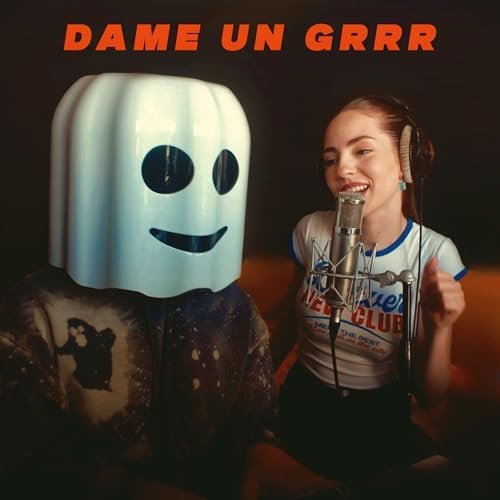In the summer of 2025, something unexpected happened. A playful phrase — “Dame un grrr, un qué?” — echoed across TikTok and YouTube, igniting a firestorm of memes, duets, remixes, and cultural curiosity. But this wasn’t just another viral soundbite. It was the start of a full-blown movement in digital music culture, driven by rhythm, humor, and global creators who turned a growl into an anthem.
This blog dives into how a quirky musical hook transformed into one of 2025’s most imitated and celebrated songs, who made it, and why it connected so deeply with fans around the world.
It Began with a Claw — Literally
The moment didn’t come from a PR campaign or big-budget music video. It came from a spontaneous, relatable TikTok: a young creator lip-syncing to “Dame un grrr” while miming a claw gesture. That smirk, the sass, and the absurdity — it all just clicked.
Within days, the audio had flooded For You pages. People weren’t just watching; they were participating. Kids, influencers, dancers, gym-goers — everyone jumped on. Even celebrities like Charli D’Amelio and local Indian creators added their spin, giving it an unmatched global lift.
The Artists Behind the Sound

So who’s responsible for the roar?
Enter Kate Linn and Fantomel, two Romanian artists with distinctly different styles but a shared talent for cross-genre chemistry.
- Kate Linn, real name Catalina Ioana Oteleanu, was already a known figure in Eastern Europe. Her tracks like “Thunderlike” and “Chiki Chiki” blended Latin pop with Middle Eastern sounds.
- Fantomel was more underground — known in the EDM space for bouncy tracks like “Shake” and “Obsessed.” But “Dame Un Grrr” marked his first truly viral breakthrough.
Their collaboration fused humor with sleek production. It wasn’t trying to be perfect. It was trying to be fun — and it worked.
The Numbers Behind the Noise
In just a week from release:
- TikTok: Over 10 million uses
- YouTube: 4.2 million views on the official video
- Spotify: 7.4 million streams
By mid-July, it entered Spotify’s Viral 50 charts in India, Italy, Brazil, and the Philippines. DJs were spinning it in clubs. Memers turned it into a punchline. And remix artists? They had a field day.
How the Remix Culture Amplified Its Reach
A notable remix by French DJ Mosimann gave “Dame Un Grrr” a bass-heavy, club-ready version that further accelerated its appeal. Fitness creators, gaming streamers, and even fashion reels jumped in, bringing the remix to new audiences.
Here’s a performance comparison:
| Metric | Original Version | Mosimann Remix |
|---|---|---|
| TikTok Uses | 10+ million | 4+ million |
| SoundCloud Streams | N/A | 320+ million |
| YouTube Views | 4 million | 1.2 million |
| Spotify Streams | 7.4 million | Not reported |
More Than a Meme — It’s Music Evolution

What made this song last longer than a trend?
- It was inclusive — anyone could join in, regardless of language or region.
- It had layers — humor, rhythm, remixes, dance, even meme potential.
- It was creator-driven — fans gave the song meaning beyond what the artists could’ve imagined.
Other Tracks by the Artists Worth Exploring
If you’re vibing with “Dame Un Grrr,” check these too:
What Creators Can Learn from This Song
- Focus on simplicity — one catchy hook > five perfect verses
- Let the community take control — viral songs are often crowd-built
- Don’t ignore humor — it travels fast
- Embrace remixes — they can take your track into new genres and audiences
Final Thoughts
“Dame Un Grrr” is a masterclass in viral music done right. It wasn’t forced. It wasn’t overly polished. It simply rode the wave of human behavior — people want to participate, not just listen.
Official Video link : https://youtu.be/wHlAnhkLUvw?si=druo0CS3SvzjwmaH

More Stories
Amazon Great Freedom Festival 2025: What to Grab and What to Skip
Flipkart Freedom Sale 2025 – It’s Live Now: Your Full Deal Breakdown
Mohammed Siraj: The Silent Storm Behind India’s Gritty Fightback